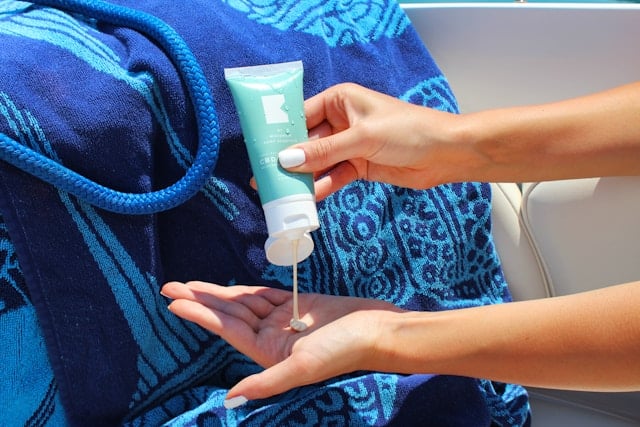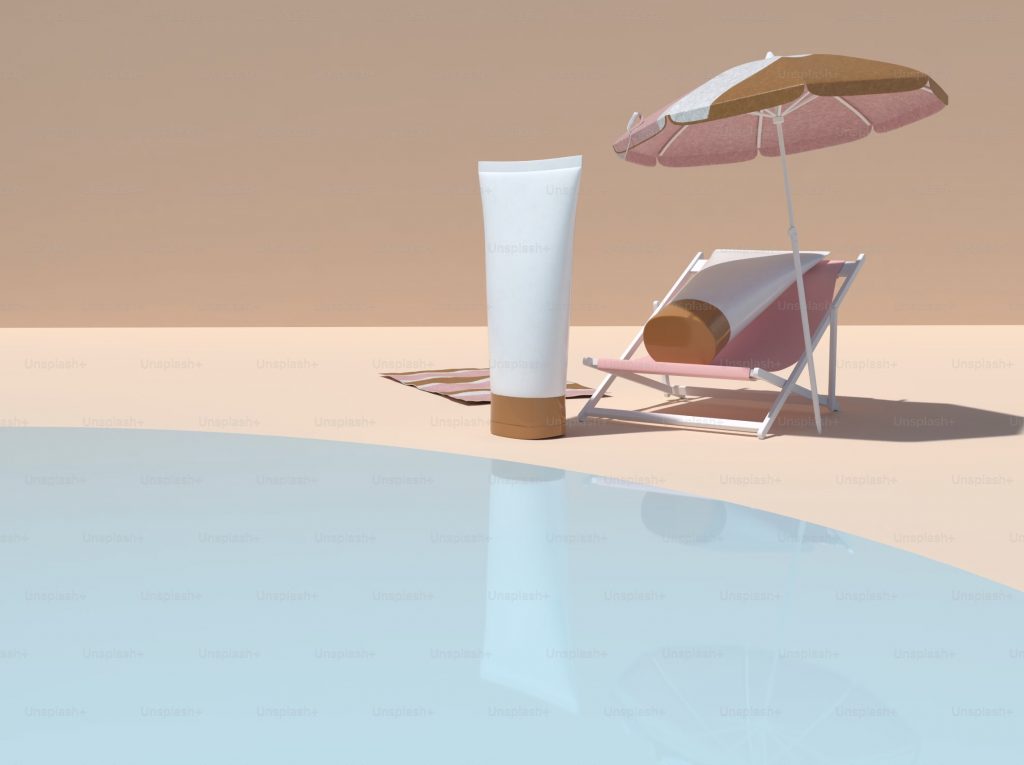Keeping one’s young look is often linked to health, energy, and attractiveness in modern culture. But the sun’s harmful UV radiation may derail efforts to get younger-looking skin. Sunlight causes a cascade of skin problems, including wrinkles, sagging, and premature aging. In this article, we will delve into how UV radiation hastens the aging process of the skin and stress how important it is to use sun protection to keep the skin looking young.

Understanding UV Radiation
Both natural and man-made sources of ultraviolet light, such as tanning beds, contribute to the electromagnetic radiation known as ultraviolet radiation. The three main categories are UVA, UVB, and UVC, which are determined by the wavelength. Although most UVC rays are absorbed by the Earth’s atmosphere before they can reach the surface, UVA and UVB rays can enter the atmosphere and have an effect on the skin.
UVA Radiation
These rays can penetrate deeper into the skin because of their extended wavelength. Wrinkles, sagging, and a general decrease in the elasticity of the skin are all signs of photoaging, which is mainly caused by ultraviolet A (UVA) radiation.
UVB Radiation
These rays are the main cause of sunburns; they have a shorter wavelength. Sunlight’s ultraviolet B (UVB) rays are a major carcinogen because they destroy skin cells’ DNA.
Sunscreen Effectiveness
The purpose of sunscreens is to shield the skin from the damaging effects of ultraviolet light. Sunscreens come in a variety of forms, including chemical and physical (mineral) sunscreens.
Minerals like zinc oxide and titanium dioxide are the active components in physical sunscreens. Their primary function is to stay on top of the skin and then reflect UV rays. For delicate skin, physical sunscreens are usually the way to go since they won’t irritate the skin as much.
Sunscreens made of chemical ingredients absorb ultraviolet light and convert it into heat that the skin can subsequently release. Common components include octinoxate, oxybenzone, and avobenzone. When compared to physical sunscreens, chemical sunscreens are often more aesthetically pleasing and less bulky.
Sunscreens that blend the two kinds are also available. The creative formula of Korean sunscreen is well-known, and it often combines physical and chemical filters to provide maximum protection while also improving the user experience. In addition to protecting the skin from harmful UV rays, Korean skincare products often include antioxidants, moisturizing agents, and calming components in their sunscreens.
Impact of Radiation on Skin Aging
Sunlight causes a condition called photoaging, which speeds up the skin’s normal aging process. Some of the most important ways that UV light damages skin are:
- Damage to collagen fibers occurs deep inside the dermis as a result of ultraviolet exposure, especially UVA rays. The protein collagen maintains the structure and hardness of the skin. Degradation causes the skin to lose its elasticity, which in turn causes sagging and wrinkles.
- The skin’s ability to return to its original form after being stretched or contracted is facilitated by elastin, another protein. Skin becomes less elastic and more prone to drooping when exposed to UV light, which destroys elastin.
- UVB rays cause mutations in skin cells by damaging their DNA. Age spots, wrinkles, and an elevated risk of skin cancer may all be outcomes of this kind of damage.
- UV light produces free radicals, which are unstable chemicals that cause cell damage. This oxidative stress accelerates the aging process by causing inflammation and the destruction of vital cellular components.
Tips for Effective Sun Protection
Following these guidelines will maximize sunscreen use and keep your skin looking young.
- Even on cloudy days or while you’re inside, you should still apply sunscreen every day because UV radiation can penetrate clouds and glass.
- Be sure to apply sunscreen generously to any exposed skin. A decent rule of thumb is to use roughly one ounce, or a shot glass full, for the whole body.
- Put sunscreen back on your skin every two hours, or more often if you sweat a lot or swim. Even water-resistant sunscreens still need reapplication after being in the water for an extended period.
- Sunscreen is only one component of a multi-pronged approach to sun protection that also involves avoiding the sun during its peak hours, wearing protective clothes, and finding cover. Sunglasses, wide-brimmed hats, and protective apparel may greatly lessen the impact of ultraviolet radiation. Wearing clothes with a high UPF provides extra protection from the sun.
- Make sure you include a broad-spectrum sunscreen that has an SPF of 30 or higher in your skincare routine. Before you choose a sunscreen, consider your skin type and whether you have any skin problems. For instance, use a zinc oxide or titanium dioxide physical sunscreen if your skin is easily irritated.
The Future of Sun Protection
Sunscreens have a bright future ahead of them because of the expanding fields of dermatology and skincare. More eco-friendly sunscreens, formulated to address individual skin types and conditions, and provide longer-lasting protection, are all in the works. There is hope for new technologies that can both prevent and reverse some of the damage caused by UV radiation, such as enzymes that repair DNA and sunscreens that include antioxidants. An increasing number of public awareness efforts and educational programs are highlighting the significance of sun protection, beginning at a young age. By keeping themselves informed and adjusting to these developments, people may better safeguard their skin and reap the rewards of healthy, young skin for years to come.

When it comes to your skin, the sun has a significant influence, which may be beneficial as well as potentially harmful. An excessive amount of exposure to UV light may cause premature aging of the skin and an increase in the chance of developing skin cancer, even though it is necessary for general health and well-being. Sun protection that is effective is vital for the preservation of young skin. This may be accomplished by the use of sunscreens, behavioral adjustments, and the use of physical barriers. Through an awareness of the effects of UV radiation and the implementation of preventive measures, you will be able to enjoy the sun without risking your skin’s health and yet maintain its youthful look.












